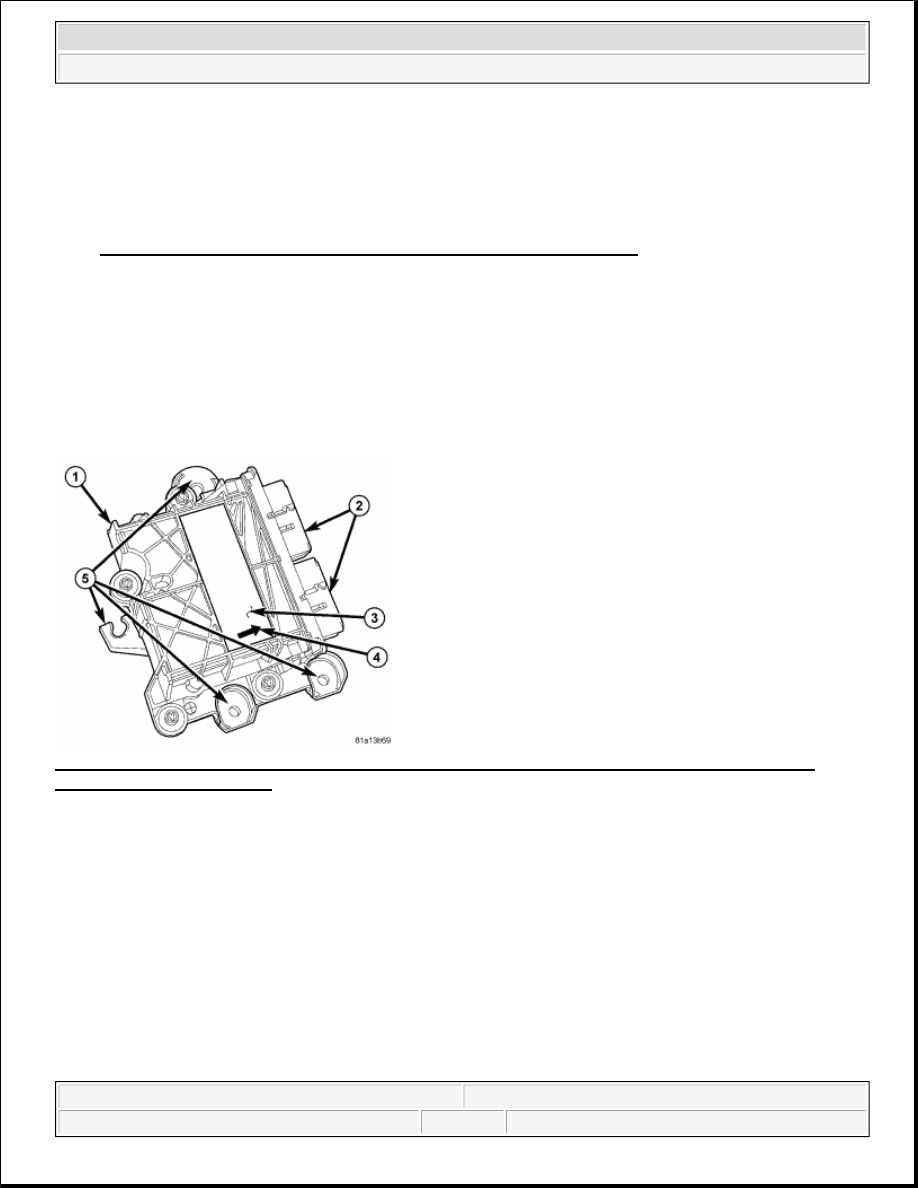Dodge Nitro. Manual - part 241

2 N.m (20 in. lbs.).
3. Reconnect the two seat wire harness connectors to the OCM connector receptacles located on the
forward-facing end of the module. Be certain that the latches on each connector are fully engaged.
4. Do not reconnect the battery negative cable at this time. The Supplemental Restraint System (SRS)
verification test procedure should be performed following service of any SRS component. See
VERIFICATION TEST - SUPPLEMENTAL RESTRAINT SYSTEM.
5. Following successful completion of the SRS verification test procedure, perform the Occupant
Classification System Verification Test using a diagnostic scan tool. Refer to the appropriate diagnostic
procedures.
OCCUPANT RESTRAINT CONTROLLER
DESCRIPTION
OCCUPANT RESTRAINT CONTROLLER
Fig. 49: Identifying Occupant Restraint Controller (ORC), Electrical Connector Receptacle, Label,
Arrow & Mounting Bracket
Courtesy of CHRYSLER LLC
The Occupant Restraint Controller (ORC) (1) is secured with four screws to a molded plastic mounting bracket
(5). The mounting bracket and ORC unit is then secured with two nuts and two screws to a stamped steel
mounting bracket welded onto the top of the floor panel transmission tunnel between the two front seats beneath
the floor console and rearward of the transmission gearshift mechanism in the passenger compartment of the
vehicle. Concealed within a hollow in the center of the molded plastic ORC housing is the electronic circuitry
of the ORC which includes a microprocessor, an electronic impact sensor, an electronic safing sensor, and an
energy storage capacitor. A molded plastic end cover plate with a rubber O-ring seal is secured to the open end
of the ORC housing with two integral latch features to enclose and protect the internal electronic circuitry and
components.
An arrow (4) printed on the label (3) on the top of the ORC housing provides a visual verification of the proper
orientation of the unit, and should always be pointed toward the front of the vehicle. The ORC housing has four
2007 Dodge Nitro R/T
2007 RESTRAINTS Service Information - Nitro